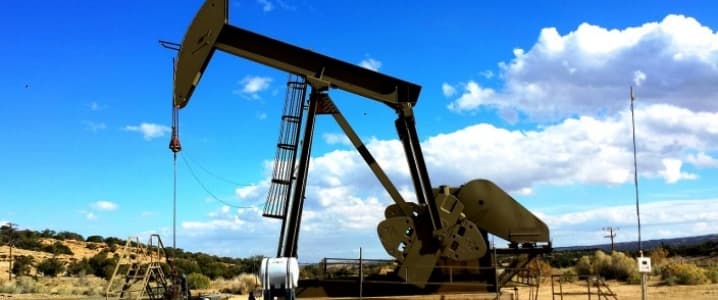Technological upheavals in the oil sector will make it possible for mini-producers to market crude profitably, creating new competition for bloated fossil fuel companies accustomed to benefitting from their largesse.
It takes serious cash to start an oil and gas exploration company the traditional way. A single well in the Permian Basin – recognized as the most cost-effective drilling area as barrel prices recover enough to support new rigs – currently costs between $5 million to $9.3 million to operate, depending on the well’s depth. And while logistical tricks and fracking R&D allow oil and gas companies to stretch the productive lifespan of their wells, those efforts only add to the sites’ operational costs.
Average estimated costs for wells—as of 2015—in the Marcellus ($6.1 million), Bakken ($5.9 million) and Eagle Ford ($6.5 million) formations are just as pricey, because the economies of scale model has dominated the oil sector for decades, with deep-pocketed investors bankrolling the fossil fuel giants in their early years, after which profits from refined goods cover increasingly ambitious projects spanning states, nations, and eventually continents.
But three years of low oil prices have brought even large oil companies to their knees, forcing liquidations of billions of dollars in assets to plug bleeding bottom lines. Then in 2017, more stable Brent barrel prices in the $45-$55 range prompted an increase capital expenditures, but at most, by seven percent, according to Barclay’s recent report on the matter.
That’s a single-digit recovery after the 2014 market crash slashed capex budgets by 60 percent industry-wide.
This small capex increase on behalf of Big Oil is a telltale sign that the largest companies in the industry aren’t ready to take full advantage of expansion opportunities in the U.S. oil patch—at least not at this price point. Related: Putin’s Newest Oil Play: Russia Gains Foothold In Iraqi Oil Patch
Meanwhile, operational improvements will lead drillers to cut costs further—all drillers, small and large—and the cost-cutting activity is sure to level out the playing field, at least somewhat, as previously out of reach costs become more tenable for the smaller players in the industry.
For starters, fully utilizing data collected from rigs would lead to drastic savings, according to a recent analysis in the Harvard Business Review. Less than one percent of the information is used in decision-making today. Deeper wells, automated drills, and robots that can fix underwater pipelines will all play a part in the oil industry’s future.
Agile mini-producers—piggy-backing off advances that are tried and tested by the big boys—will add to the international race to out-hack the oil extraction process. The modern-day David and Goliath story could begin once a single Silicon Valley tech company figures out how to harness software and hardware advances to create an effective well for just a few hundred thousand dollars. With significantly lowered costs, even the smallest in the industry would be able to take part.
The proposition sounds outlandish now, but only because of the exorbitant rates entrenched oil companies generally pay for wells, drills, and oilfield services. Costs for those facilities are just assumed to be in the millions—so much so that the Chevron’s and ExxonMobil’s of the oil world don’t bat an eye signing checks for the expenses—while smaller players in the field couldn’t even consider such an investment.
A lean tech company could make an effective comparable product at a shockingly low price point, forever transforming the industry’s cost formula for essential equipment.
This has already happened in other industries, with Elon Musk’s Space Exploration Technologies, or SpaceX, putting this very kind of pressure on United Launch Alliance and its monopoly on U.S. Air Force contracts by winning a $96.5 million contract to launch a GPS satellite. The Boeing-Lockheed joint venture, accustomed to contracts worth hundreds of millions of dollars, had been drastically undercut by SpaceX’s in-house engineering and manufacturing facilities.
ADVERTISEMENT
Market pressures on high-cost operators will continue to be an issue as the world approaches peak oil demand anytime between 2025 and 2030. Freshly incorporated mini-producers, equipped with lighter, smarter rigs will soon outmaneuver oil companies with sunk capital in old-school rigs, changing the oil industry forever.
By Zainab Calcuttawala for Oilprice.com
More Top Reads From Oilprice.com:
- Conflicting News Keeps Oil Prices Down
- Does This $2.5B Bidding War Signal A Resurgence For Coal?
- Is Big Oil’s Bet On Petrochemicals A Bust?



















I was wondering why the stock market was having a pull back at this time. It looks like I have my answer.